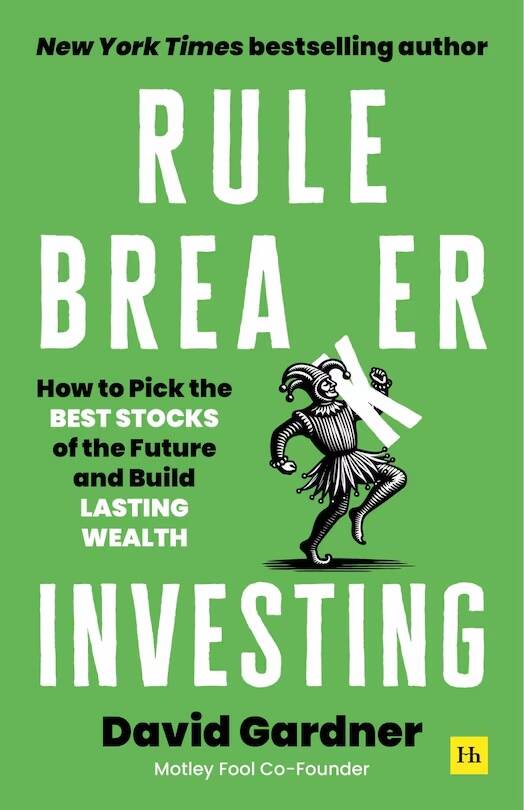Fool’s guide for successful investing
New book from co-founder of popular advice platform urges some rule-breaking for long-term prosperity
Advertisement
Read this article for free:
or
Already have an account? Log in here »
To continue reading, please subscribe:
Monthly Digital Subscription
$1 per week for 24 weeks*
- Enjoy unlimited reading on winnipegfreepress.com
- Read the E-Edition, our digital replica newspaper
- Access News Break, our award-winning app
- Play interactive puzzles
*Billed as $4.00 plus GST every four weeks. After 24 weeks, price increases to the regular rate of $19.00 plus GST every four weeks. Offer available to new and qualified returning subscribers only. Cancel any time.
Monthly Digital Subscription
$4.75/week*
- Enjoy unlimited reading on winnipegfreepress.com
- Read the E-Edition, our digital replica newspaper
- Access News Break, our award-winning app
- Play interactive puzzles
*Billed as $19 plus GST every four weeks. Cancel any time.
To continue reading, please subscribe:
Add Winnipeg Free Press access to your Brandon Sun subscription for only
$1 for the first 4 weeks*
*$1 will be added to your next bill. After your 4 weeks access is complete your rate will increase by $0.00 a X percent off the regular rate.
Read unlimited articles for free today:
or
Already have an account? Log in here »
Fooling around with investing is no joke.
That is unless, you’re reading the Motley Fool, which has infused a bit of foolhardiness into sound investment insight regarding stocks since the early 1990s.
Started by David Gardner (a former English literature major) and his brother, the Motley Fool has more than 600,000 paid subscribers today, seeking insights on up-and-coming and fast-growing publicly traded companies, powered by promising trends such as artificial intelligence, robotics and the commercialization of space.

Gardner goes by the title of chief rule breaker at the U.S.-based Motley Fool, and he has a new book out this month that urges investors to break a few rules themselves.
“First of all, rules are important for a reason,” says the author of Rule Breaker Investing: How to Pick the Best Stocks of the Future and Build Lasting Wealth.
“But not every rule is right all the time and sometimes … you can go against conventional wisdom, and break a rule or two.”
It’s a formula that has worked well for Gardner over more than three decades of investing whereby he and his crew at the Motley Fool have picked some notably, wildly successful stocks — i.e. Amazon Inc., Nvidia Corporation and Netflix — long before they became the high-flying, popular names they are today.
“I have been greatly rewarded for breaking rules in investing,” he explains in a recent interview with the Free Press.
His new book is a formula for rule-breaking investing, providing do-it-yourself investors — especially those new to investing — with a toolkit to identify rule-breaking (in a legal way) companies that are innovative leaders in their respective industries with strong long-term growth potential in fast-growing facets of the economy.
Gardner is talking about finding buy-low-and-sell-high opportunities — though that concept itself is a rule he also urges investors to break.
“My advice is to also buy high and try not to sell at all,” Gardner says.
Sure, investing in Amazon when it was worth less than US$1 a share (its price this week was hovering around US$230) is the ultimate buy-low success story.
Gardner did buy Amazon stock at that low price point and, in the 2000s, urged readers to consider doing the same. But more importantly, he has held onto that investment.
It’s the ‘sell high’ part of the mantra Gardner wants investors to reconsider because “so many are conditioned to think they should not hold a stock long and sell before the next bear market.”
That leads to investors missing out on long-term growth.
Gardner cites Netflix as an example.
In its early days, it split up its DVD rental business and its newer one involving streaming video content. At the time, its share price plummeted from about US$35 to US$17. Gardner’s point is if he had sold his position in the company at that juncture, he would have missed out on its growth as a premier innovator in streaming content.
Netflix’s share price today, by the way, was about US$1,200 this week.
“That kind of success in investing only comes from patience,” he adds.
Another rule to break is the one where investors are told not to own individual stocks. Rather, it’s recommended they purchase well-diversified funds to achieve their money goals.

Certainly, that can be good advice, Gardner says, noting many investors are well-served owning broad-based, low-fee index funds like exchange-traded funds (ETFs).
But the big returns, he has discovered through experience, that can dramatically change portfolios for the better often come from investing in singular stock positions that over time can dramatically power portfolio returns.
“My focus for 30-plus years has been asking: what the best companies are to own?”
The strategy has worked well; the Motley Fool has recommended top-performing stocks like Shopify, Intuitive Surgical Inc. and Tesla long before their share prices began their dramatic climbs. Even when many companies have stock prices that have already surged, Gardner cautions investors not to overlook them. As long as these firms remain leaders in their field, they are likely to keep winning market share.
“So like with Tesla and Netflix, these keep making new highs year after year despite the volatility, but a lot of people still don’t want to invest … because they think they missed all the growth already.”
Those investors are missing a bigger picture, he adds. Barring a key shift in their industry or a sudden case of poor management, investors should still consider buying these companies today if they plan to hold them for several years.
However, that’s not a recommendation to buy Netflix, Amazon or Tesla today, Gardner notes.
And you won’t find recommendations in Rule Breaker Investing.
“I don’t spend a lot of time saying, ‘Here’s the next Amazon,’ because the book aims to teach them how to find those companies on their own — and maybe make people smile and laugh a little along the way.”
Perhaps his new book’s biggest message is for readers to think differently from the herd. Or more aptly, they can approach investing like a Shakespearian fool, for which the Motley Fool takes its name.
“I loved Shakespeare’s fools because they went against conventional wisdom and often were the ones telling the truth,” Gardner says.
With Rule Breaker Investing, readers are urged to also play the fool, break a few rules and just maybe invest profitably for the long term.
Joel Schlesinger is a Winnipeg-based freelance journalist
joelschles@gmail.com


